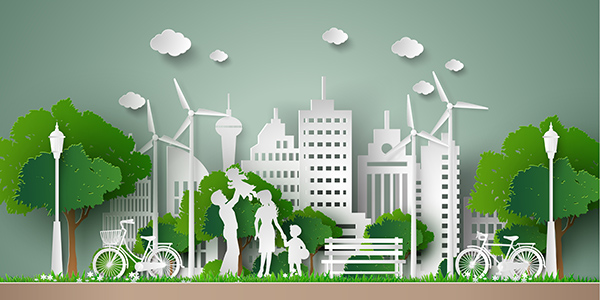
 |
Dr Christian Calvillo 18 January 2018 |
As Prof Karen Turner has noted, the Scottish Government gave energy folks an interesting early Christmas present: the new Scottish Energy Strategy. The strategy outlines the vision and main objectives for the energy system in Scotland up to 2050, and the alternative options that may be pursued to help achieve them. In other words, it describes “low-regret” priorities, policies and technologies to help achieve the objective of a mostly decarbonised energy system for Scotland.
The strategy presents two indicative scenarios (informed by the Scottish TIMES model), depicting two different potential futures for the Scottish energy system: one based on electrification, and one based on hydrogen (note that these scenarios do not imply a 100% reliance on a particular energy carrier but rather which one will be the main fuel. So the electric scenario also considers hydrogen in a smaller scale, and vice versa).
Though certainly “these [scenarios] are purely illustrative, designed to help us understand what infrastructure and behaviours might be required under different future scenarios” (The Scottish Energy Strategy, page 24), we are not provided with any information on these assumptions, but we’d like to believe they are based on realistic projections and considerations.
Note that in order to model these “extreme” scenarios in TIMES, several assumptions and user constrains are needed, which could be practical (or not) in real life. Also, TIMES tries to find the least-cost solution for the energy system, according to the particularities defined in each scenario.
However, it is unlikely that either of these future energy scenarios will deliver the cheapest energy system; and the ‘optimal’ solution is likely to fall somewhere in between. Therefore, this brief analysis will try to assess what elements are less or more plausible from each scenario, what can we learn from them and to provide some insights on what the future will look like.
Scenario 1: an electric future
This scenario is based on the electrification of services, mainly replacing fossil fuels for transport and heating needs. The specific changes in the different sectors include:
- In transport, the Scottish car and van fleet has been fully converted to electric vehicles. Important infrastructure investments will be carried out, with fast chargers replacing petrol pumps at service stations, and a range of charging infrastructure will be available both domestically and in other typical destinations such as supermarkets and carparks. Buses will also be transformed to electric drive trains and heavy good vehicles (HGV) will be fuelled partly by electrolysed hydrogen fuel.
- In the residential and services sector, most buildings will use heat pumps, with heat storage (when possible) providing more flexibility. Additionally, important attention will be paid to energy efficiency in buildings, so energy demand will decrease significantly. All this will translate to around 80% of total residential demand and 70% of the service sector will be electric.
- In the industrial sector, less changes are expected as the industrial sector relies on a mix of fuels, to meet the specific requirements of certain processes, which cannot be provided solely by electricity.
- In the power sector important changes are expected. The electrification of services will produce an increase of 60% in electricity demand (since 2015), and it will be accompanied by the growth of renewable generation. Peak demand will also increase considerably, but this is mitigated with smart meters, demand response, and new market structures, promoting changes in consumer behaviour. Stronger interconnectors with Europe and the rest of the UK will be present to balance the high levels of renewable generation, and Scotland retains some gas generation capacity but this is used increasingly rarely.
Overall, a reduction a 30% in final energy delivered through the energy system is achieved in this scenario.
This scenario has many elements that seem not only possible, but also probable. For instance, the full electrification of the Scottish vehicle fleet, considering the technology availability at this point and the objectives and investment plans set by the Scottish Government. On the other hand, the electrification of heating is, of course, possible as the technologies are available and continue to improve.
However, to achieve this level of change involves several factors that are not straight forward. First of all is cost, right now the unit of electricity is almost four times the price of the unit of gas and according to the tariff and the technology used, the average cost of heating your house with electricity could be approximately 2 to 4 times higher than the equivalent using gas and that is not even taking into account the equipment costs.
So considering that the electricity demand is only going to increase (due to the electrification of heat and transport) I can only see electricity prices, and thus costs, going up. The cost also relates to a second point: behavioural change.
In order to be as cost-effective as possible, the electric heating and hot water production requires changes in behaviour from consumers; that is, when and how we use our heating systems. Information feedback and smart systems will be increasingly important for this, making sure that the user has the right incentives to be involved, as not everyone might have the knowledge, the tools or the willingness to behave “optimally”.
Scenario 2: a hydrogen future
The second scenario is based on using low carbon hydrogen as the main fuel to meet our energy needs. Therefore, most of the end-use gas demand and fossil fuels for transport are replaced by hydrogen. The specific changes in the different sectors include:
- In transport, all cars and vans will be hydrogen-powered, using fuel cells and an electric drivetrain. So, petrol and diesel service stations are converted gradually to hydrogen. A similar change happens with hydrogen-powered buses and HGVs, partially decarbonising larger road vehicles.
- In the residential and services sector, Natural gas boilers will be replaced with highly efficient hydrogen boilers and fuel cells, and whenever possible other appliances are converted as well. Hence, 60% of demand in the residential sector will be met with hydrogen.
- In the industrial sector, Hydrogen replaces natural gas for most industrial and commercial heat demand. However, some specialist processes will continue to use natural gas. Processes at large industrial installations will be coupled with carbon capture and storage (CCS).
- In other infrastructure, Hydrogen is produced through electrolysers (taking advantage of renewable energy) and from steam methane reforming (SMR) plants paired with CCS. So, the national gas transmission system will continue to supply an increased demand of natural gas to feed the hydrogen production process (demand for gas as an input increases by around 60%).
The gas demand will be met from a variety of sources, a large share of which will be imports of both natural gas from Europe and liquid natural gas (LNG) from other markets world-wide.
Just like the electrification scenario, this hydrogen scenario has many elements that seem feasible for the future, especially on those changes relating to industry, as several processes cannot be supplied with electricity, and thus the reliance on technologies such as CCS.
Additionally, this hydrogen scenario gives renewed importance to the Scottish gas and oil sector, which is one of the defined priorities of the Scottish Government, by maintaining the gas network to supply the required natural gas for hydrogen production and to store captured carbon.
For the residential and transport sectors, the path presented in this scenario is not that straightforward. Hydrogen fuelled cars and vans are currently available but they have not reached the scale and costs of Evs (hydrogen cars are currently 2 to 3 times more expensive), so the latter technology seems slightly more plausible in the medium term.
On the other hand, hydrogen used for heating looks like a sensible idea, as current infrastructure can be used with only minor changes (in comparison with the alternative of electrification, which would require more infrastructure investments on the power system and equipment change at household level). However, it is not clear how expensive will be hydrogen as a heating fuel, and if it makes more sense than electricity.
What can we learn from the scenarios and what can we expect for 2050?
There are many uncertainties and questions for the future, but despite all the big unknowns, these two scenarios give, in my opinion, three important hints for 2050: i) what we don’t want, ii) what we do want, and iii) that the final outcome will be some hybrid of the fully-electric and hydrogen scenarios.
The UK Government in its Clean Growth Strategy presents three possible scenarios for 2050, two very similar to the ones presented by the Scottish government (based on electricity and hydrogen) and an alternative one called ‘Emissions removal pathway’, based on using biomass and CCS.
I believe that the Scottish government did not present a third alternative scenario because that would be clearly infeasible, highly impractical (like a full reliance on biomass, or full reliance on imports), or based on “prohibited” technologies. Alf Young raised this same point, remarking that there is no mention nuclear or fracking, suggesting that they will not be considered in the future energy system.
Common ground
For the second point, we need to look into the common ground between the two scenarios. Also considering the vision and guidelines set on the energy strategy, there are some elements that stand out.
For instance, hydrogen and CCS technologies seem to be an important part of several industrial processes, so this is likely to happen no matter the scenario. Another common point is the increase of productivity.
Both scenarios suggest that there will be important efforts towards improving buildings’ energy efficiency, and the strategy sets a new productivity target which is likely to affect technologies and the way we do things, independent of the energy carrier we use (the wider scope of this productivity target is discussed with more detail in Karen Turner’s blog post).
Lastly, the Scottish Government recognises that “Scotland’s energy system in 2050 is unlikely to match either of these (scenarios), but will probably include aspects of both.” In the transport and residential sectors there are no clear ‘winners’, so the most probable outcome is to have complementary technologies.
For instance, a large share of the car and van fleet is likely to be electric, with some hydrogen (fuel cell) vehicles as well, and for bigger vehicles (such as HGV and buses) hydrogen seems to be a more reliable option.
A similar mix of fuels is likely to happen for residential heating. Heat pumps and storage heaters continue to improve and are readily available, while pipes serving domestic hydrogen will still take a few years to be fully accessible.
So it seems that considering the urgency to decarbonise the building stock (see the targets set on the Scotland’s Energy Efficiency Programme (SEEP)), many houses, especially those not connected to the gas network, will take the electric path while other will slowly transition to hydrogen in the medium term.
Whichever the path we follow, what is clear is that action must be taken as soon as possible, and everyone has to play their part to achieve a smooth and successful energy transition.
Tags: Energy Blog